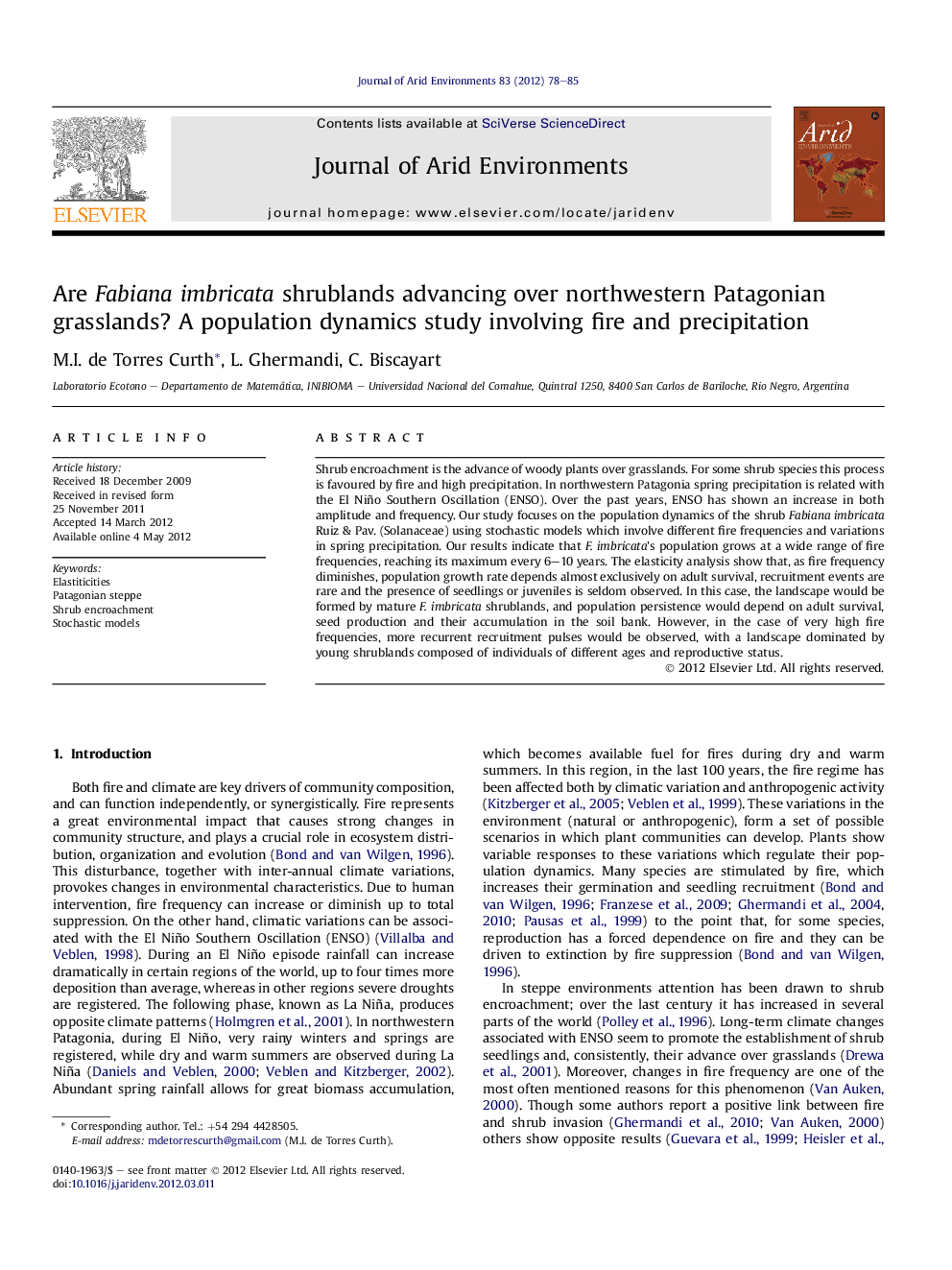| Article ID | Journal | Published Year | Pages | File Type |
|---|---|---|---|---|
| 4393334 | Journal of Arid Environments | 2012 | 8 Pages |
Shrub encroachment is the advance of woody plants over grasslands. For some shrub species this process is favoured by fire and high precipitation. In northwestern Patagonia spring precipitation is related with the El Niño Southern Oscillation (ENSO). Over the past years, ENSO has shown an increase in both amplitude and frequency. Our study focuses on the population dynamics of the shrub Fabiana imbricata Ruiz & Pav. (Solanaceae) using stochastic models which involve different fire frequencies and variations in spring precipitation. Our results indicate that F. imbricata's population grows at a wide range of fire frequencies, reaching its maximum every 6–10 years. The elasticity analysis show that, as fire frequency diminishes, population growth rate depends almost exclusively on adult survival, recruitment events are rare and the presence of seedlings or juveniles is seldom observed. In this case, the landscape would be formed by mature F. imbricata shrublands, and population persistence would depend on adult survival, seed production and their accumulation in the soil bank. However, in the case of very high fire frequencies, more recurrent recruitment pulses would be observed, with a landscape dominated by young shrublands composed of individuals of different ages and reproductive status.
► In Patagonia Fabiana imbricata advance is regulated by fire and spring precipitation. ► We modelled the F. imbricata population dynamics under environmental conditions. ► Our model describes the high potentiality of F. imbricata to advance in these grasslands. ► F. imbricata's population could reach the maximum growth with a fire each 6–10 years. ► Very high fire frequency or fire exclusion could decrease F. imbricata's population.
